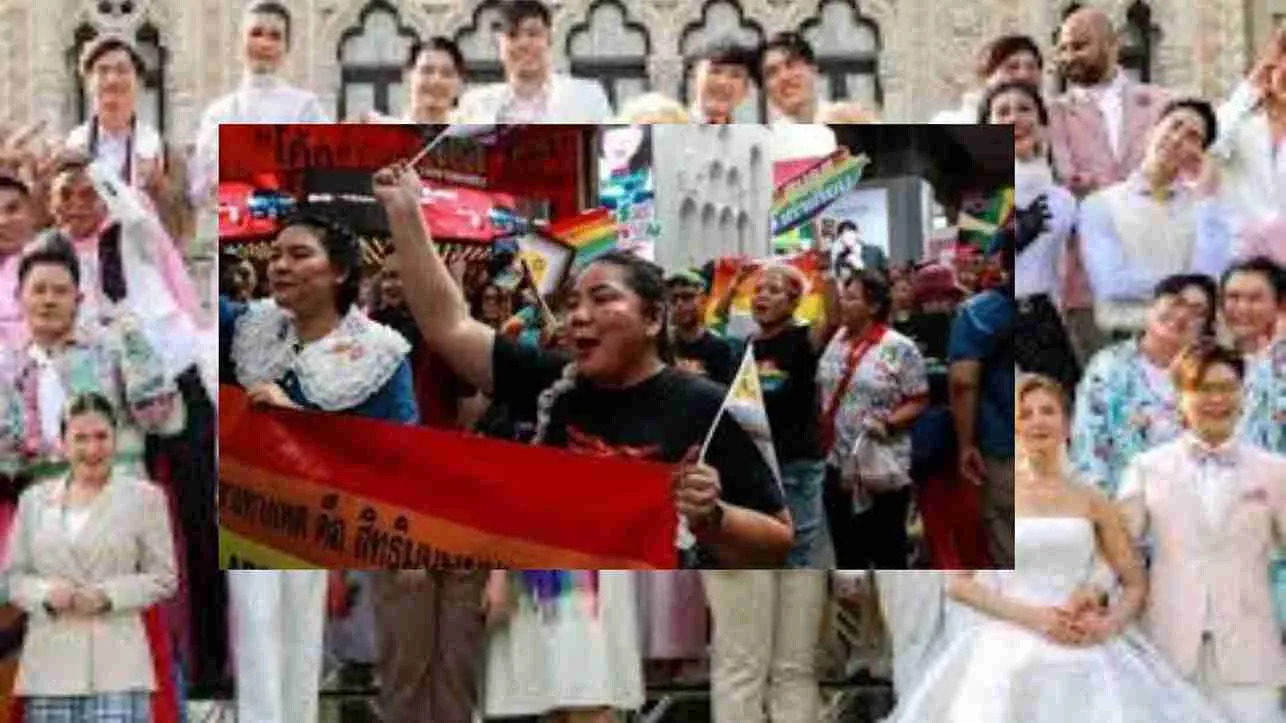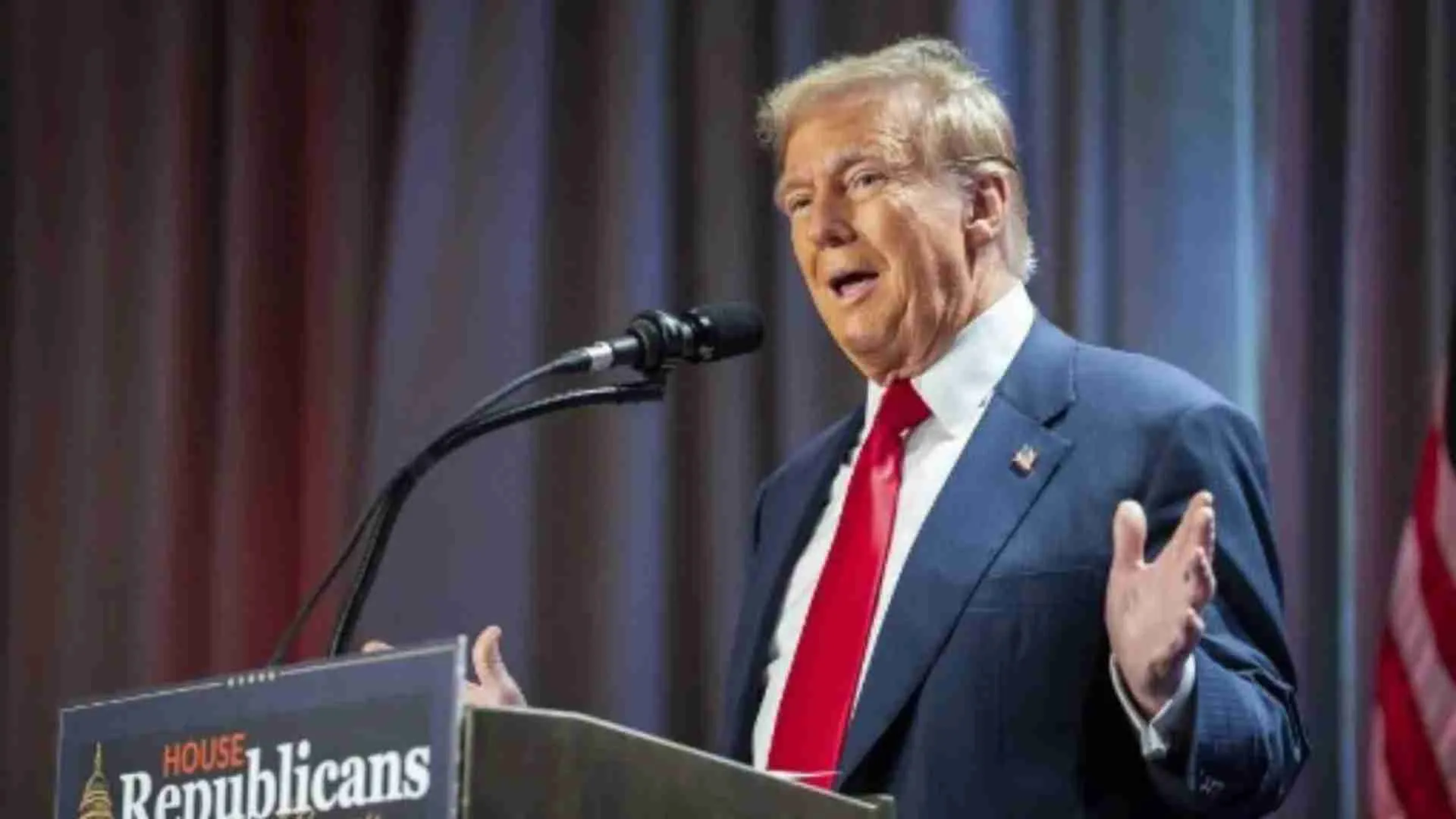On 8th December 2022, the Election Commission of India released the results for the 2022 Assembly Elections in Gujarat and Himachal Pradesh. The Bharatiya Janata Party (BJP), in power in both states, witnessed celebration as well as disappointment.
In Gujarat, the party made history by winning a seventh term and raking up the highest seat share any party has been able to secure since 1985.
In Himachal Pradesh, anti-incumbency ruled the roost, as a diminishing Indian National Congress (INC) won an absolute majority, winning 40 of the 68 seats.
While the Gujarat results bring home the BJP and by extension Modi and Amit Shah’s dominance on state politics, the results in Himachal Pradesh point towards its bi-polar nature. Gujarat has been a BJP stronghold for 27 years, since the 1995 Assembly elections. In Himachal, the BJP lost to the Congress after a rather tumultuous term with changes in leadership several times in five years.
For the Aam Aadmi Party (AAP), however, the 2022 Assembly elections were a turning point. Even as its promise of changing the winds of politics in both Gujarat and Himachal fell flat, it secured what can be called the biggest achievement by such a young party in a short period – the status of a national party with a 12.92 vote share in Gujarat. The elections underline a key element of change in the country’s electoral future before the 2024 elections.
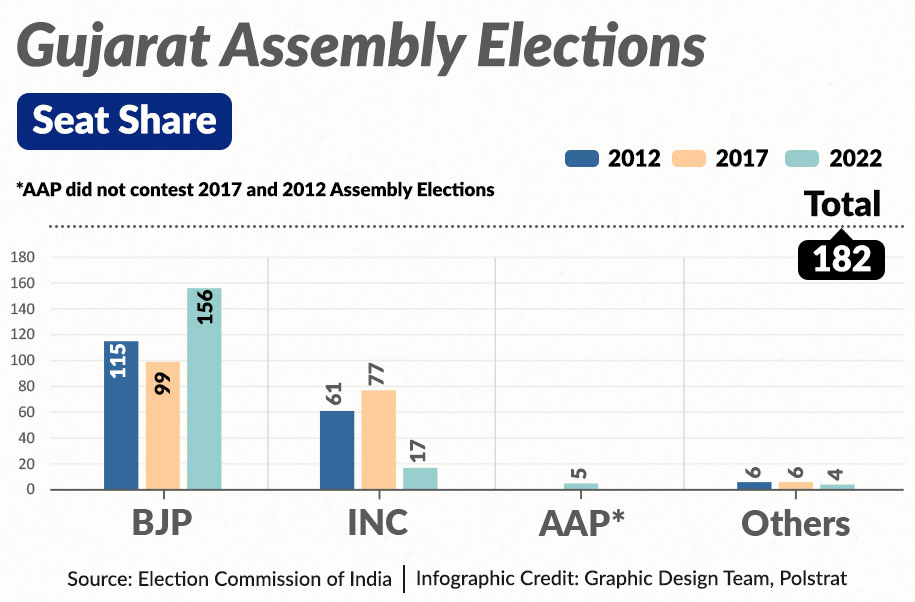
BJP’s Gujarat Dominance
In Gujarat, a 156-seat victory out of 182 seats has helped the BJP break its own record in the state as it won a clear mandate of return. The party secured its largest-ever seat share in 2002 under Narendra Modi’s leadership when it garnered 127 seats. The previous assembly elections in 2017 showcased a hint of change as the BJP gave away a large share of seats to the INC – 77 out of 182. As a result of the election which was marked by Patidars’ agitation against the incumbent BJP, the party’s tally had come down from 115 seats in 2012 to 99 in 2017. However, in the 2022 elections – a three-cornered contest, with the AAP also in the arena – the saffron party secured a home run winning another term in the state with more than 85 per cent of the seats in the assembly.
According to political analysts, BJP’s carpet bombing strategy of campaigning in those parts of the state where the party was weak, keeping PM Modi the face of the rallies and meetings, coupled with Amit Shah’s astute micromanagement of the party’s organisation in the state, is what largely worked. Major central leaders, including Union Home Minister Amit Shah, Defence Minister Rajnath Singh, Union Minister Smriti Irani, and Chief Ministers Yogi Adityanath and Shivraj Singh Chauhan, were brought in to campaign for the party in the state.
Prime Minister Narendra Modi himself held upwards of 31 rallies across the length and breadth of the state aiming to cover all the areas where the party might witness challenges. The party’s campaign strategy trickled down to the level of panna pramukhs, or page incharges, for electoral rolls, which is said to have helped it account for every single vote in every booth. Under incumbent Chief Minister Bhupendra Patel’s leadership, the party saw a minor increase in its vote share by 3.45 per cent to 52.5 per cent.

AAP’s Damage to Congress in the Coastal State
AAP’s ambitions to enter Gujarat politics appeared to have soured the INC’s presence in the state. While AAP was able to open its account in the state assembly, the party had to settle for just five seats and a vote share of 12.92 per cent. Its entry into state elections was most evident by the damage it did to the INC.
The latter’s tally came down from a massive 77 seats in 2017 to just 17
seats this time. Its vote share dropped by nearly 14 per cent to 27 per cent in 2022.
According to analysts, AAP’s candidates helped break away Congress vote share, thereby enabling a comfortable victory for the BJP in several seats. Interestingly, while the AAP’s central leadership focused on the state and helped it secure a vote share large enough to get national party status, the INC leadership’s lack of focus and campaigning in the state cost it another election. Former Congress President Rahul Gandhi’s absence from the state, barring two rallies in Surat and Rajkot, in spite of the ongoing Bharat Jodo Yatra, pointed towards the top Congress leadership’s non-serious attitude towards the state.
The elections have strengthened the BJP’s hold on the state. The gap between the BJP and the INC is so wide that the new assembly might not have any place for a credible opposition voice.
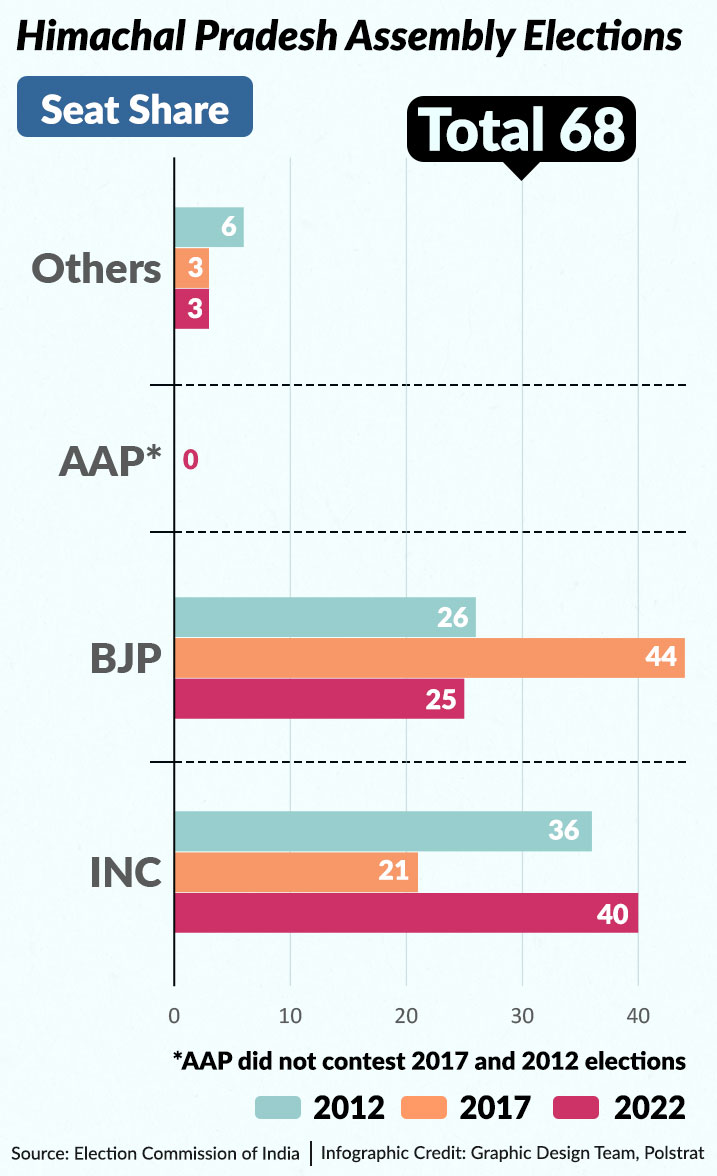
Himachal Results: Anti-Incumbency Win for Congress
What didn’t work for the Congress in Gujarat appears to have played in its favour in Himachal Pradesh. The state, just like Gujarat, witnessed a three-pole contest between the ruling BJP, the principal opposition INC, and a rising AAP.
The INC’s campaign in Himachal was directed by Rahul Gandhi’s sister and All India Congress Committee general secretary Priyanka Gandhi Vadra who led the campaign at the forefront. Not projecting a Chief Ministerial face helped the party keep its leaders united, as was evident from the post-poll run-up to select a CM candidate and directly contributed to the party’s return to power in the state. The victory is said to be on the back of promises such as returning the old pension scheme in a state that would directly benefit nearly 2.5 lakh government employees. The party’s localised campaign focused on issues relevant to the people – pension, jobs, apple farmers’ issues, and identifying sentiments of corruption against the incumbent BJP helped it win 40 seats. The party accused the incumbent Jairam Thakur government of misgovernance, corruption, and involvement in scams such as the police recruitment paper leak, frequent change in chief secretaries, and hurting the populace through the New Pension Scheme.
The party nearly doubled its seats from 21 in 2017 to 40 now with a meagre 2.22 per cent point increase in its vote share since 2017.

BJP: Status in Himachal
For the BJP, repeated changes in leadership, multiple centres of power, and the inability to rein in rebels, several of whom contested independently and dented the party’s electoral prospects, sounded the death knell. The party campaign saw three different factions led by party president JP Nadda, information and broadcasting minister Anurag Thakur, and Chief Minister Jairam Thakur. While the party declared Jairam Thakur as its face in the state, Anurag Thakur was seen as a potential challenger. However, the party’s ability to maintain a 43 per cent vote share, just 0.9 per cent shy of the victorious INC in an election it clearly lost, indicates that the public mandate still leans towards it in some form.
Against the INC’s 40-seat victory in the assembly, the BJP dropped its assembly tally by 19, having to settle for just 25 seats in the 68-member assembly. Its vote share saw a drop of nearly six percentage points.
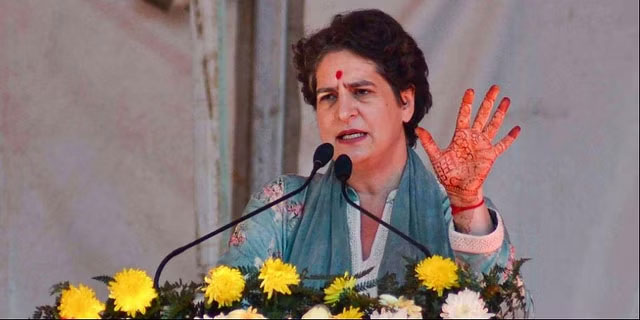
For the AAP, which was contesting the elections for the first time in Himachal Pradesh, second-hand treatment of the state might be the reason why it failed to open an account in the assembly. It had to settle with a 1.1 per cent vote share. The party sent junior leaders and Punjab MLAs to lead the campaign in Himachal, as opposed to the campaign in Gujarat, where party supremo and Delhi CM Arvind Kejriwal and deputy CM Manish Sisodia held back-to-back rallies. The absence of a mass leader, change in leadership, and arrests and raids on key leaders are said to have further dampened the spirits of the candidates and the cadre alike. Party leader and Delhi Health Minister Satyendar Jain was arrested just a few months before the election whereas there have been several raids on the premises of Manish Sisodia’s home and offices.
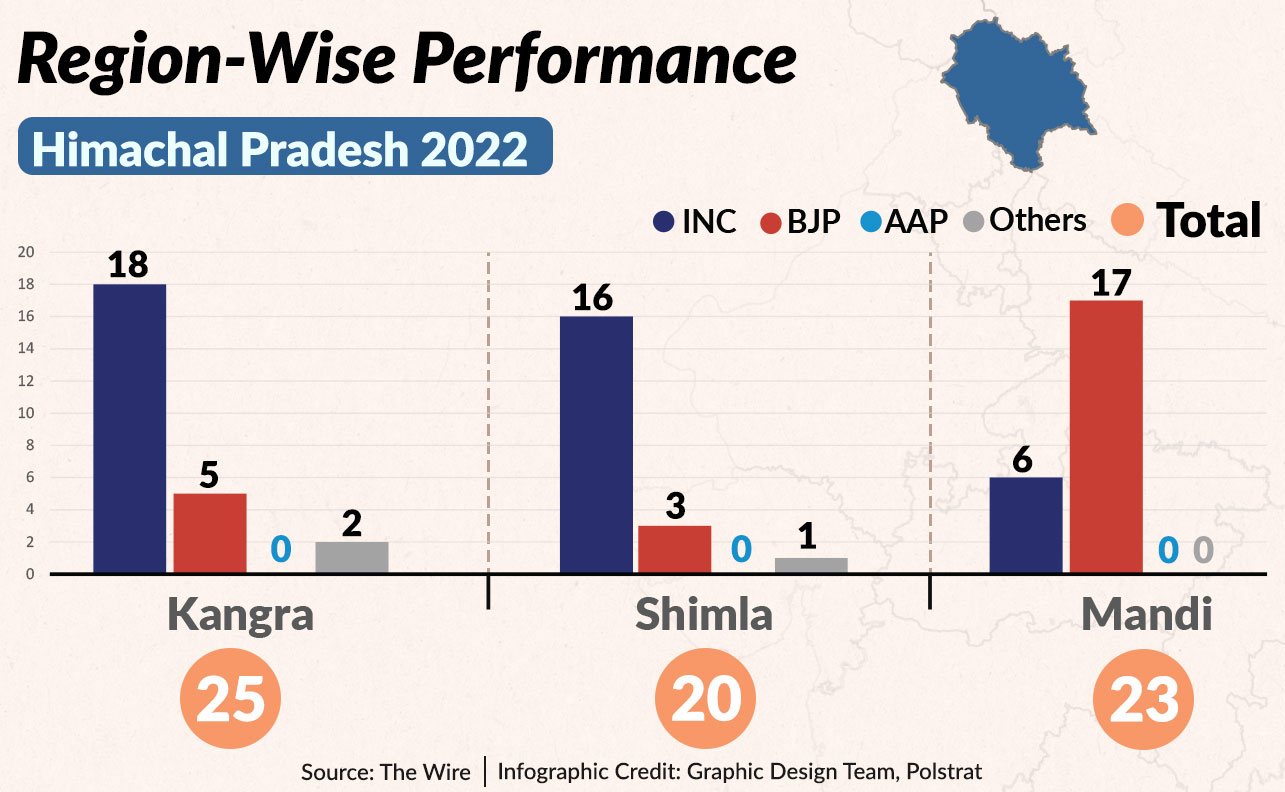
Another Semi-Final Before 2024 Lok Sabha elections
The 2022 Assembly elections in Gujarat and Himachal reflect the character of party politics in India as the country witnesses winds of change at an increasingly fast pace. On one hand, the BJP’s juggernaut has given it mandate after mandate in national and state elections across the country. On the other hand, several assembly elections have reinstated the ability of regional parties to hold their ground against the saffron party, like the Trinamool Congress in West Bengal, Dravida Munnetra Kazhagam in Tamil Nadu, and YSR Congress Party in Andhra Pradesh.

The BJP has fought nearly all national and state elections since 2019 in the name of Narendra Modi’s leadership and as a mandate on his government at the centre, thereby emerging as the dominant force in Indian politics. It has left nearly no space for an opposition party at the centre even as efforts by smaller regional parties to form a united opposition have fallen flat so far. The 2022 Gujarat elections have also given birth to a new national party and shed light on the AAP’s increasing role in national politics. The AAP’s rise in Delhi and Punjab have directly cast a shadow on the Congress’ position in electoral politics. However, it might have to travel a long distance before it emerges as a direct challenger to the BJP in the 2024 Lok Sabha elections, a challenge according to analysts, only the INC can take on. Lastly, the elections are another clear warning to the INC to put its house in order if it intends to remain relevant before the crucial 2024 Lok Sabha fight.









